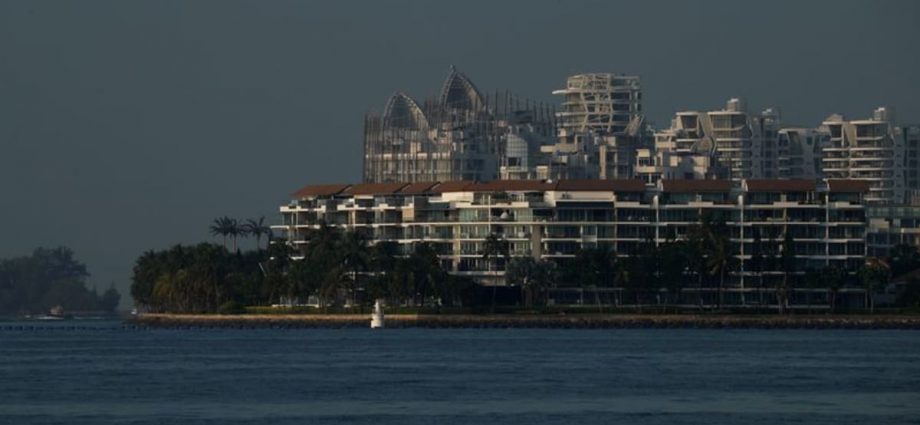
CNA called and/or visited a number of condominium showrooms in Singapore on Tuesday evening after the announcement, but they were either closed or empty.
Mr Ken Tay, a property agent at ERA Realty Network, a lot of buyers called him when they first heard the news.
“They panic, they think it’s a lot, but actually it’s not a lot,” he said.
The increase has a larger impact on clients who are buying property worth S$3 million or more, and he was working on those deals to meet the deadline tonight.
Ms Stella Thio, the project lead for eight luxury properties, said that she would be picking up some OTPs for Kilmt Cairnhill to send her clients, but there were fewer than 10.
“These are homes in the lux segment that are more than S$5 million,” she said. “The paperwork was already done, so the clients transferred the funds and we’re expediting.”
Key executive officer of PLB Realty Kenneth Tan also said there’s some activity ahead of the new rates kicking in, and it is likely to be concentrated among higher value transactions of S$4 million to S$5 million.
“People who have been waiting on the fence might want to take action,” he said, adding that there may be some buyers who feel a sense of urgency because they have already sold their properties. Others in the market may remain prudent and hold back.
“The increase is not too significant, it’s not like it prices people out,” he said.
Mr Ismail Gafoor, CEO of PropNex, agreed that there was no rush by home buyers to close transactions.
“The increase in BSD payable is not excessive and it is not insurmountable for buyers,” said Mr Gafoor.
“Some buyers who are already in negotiation prior to the announcement or those who have already narrowed their property search down to a certain unit will be encouraged to commit within today to avoid the marginal increase in BSD.”
Calculations from property analysts show that for a S$2 million property, the BSD would rise by S$5,000, while for a S$10 million property, the additional tax would be S$125,000.
Huttons senior director of research Lee Sze Teck said: “Most HDB upgraders buy below S$2 million and should be able to pay this marginal increase in property tax.”
“Ultimately, the buyers who would be paying a higher amount of BSD are those acquiring properties costing more than S$3 million each,” said Mr Nicholas Mak, head of research and consultancy at ERA Realty Network.
“However, we think that homebuyers in these two markets may not be as sensitive to such additional costs.”
Ms Christine Sun, senior vice-president of Research & Analytics at OrangeTee & Tie, agreed that wealthy buyers are not likely to be deterred by the additional BSD.
“Properties priced at S$3 million and above tend to have unique attributes or those above S$10 million tend to be rare products, which will continue to attract investor interest,” she said.
Some analysts said that while the BSD increase was minimal, buyers could be deterred following earlier wealth taxes and cooling measures for residential properties, and higher financing costs.
“Transaction volumes in both residential and non-residential properties could slow down in the near term. Prices could still be resilient given strong fundamentals of the underlying property sectors,” said Ms Tricia Song, Head of Research, Southeast Asia, CBRE.
Mr Lee added that the change in buyer stamp duty rate may have to do with the increase in property values in the last year and the likely return of foreigners to the Singapore property market.
He thinks that this increases the transaction costs for foreigners but does not discourage them from buying residential or commercial properties.
“The Government has further refined the stamp duty rates to be progressive. The more well-to-do who purchase higher value properties will pay more taxes. This will help in wealth distribution by using the taxes to help the lower income,” said Mr Lee.

